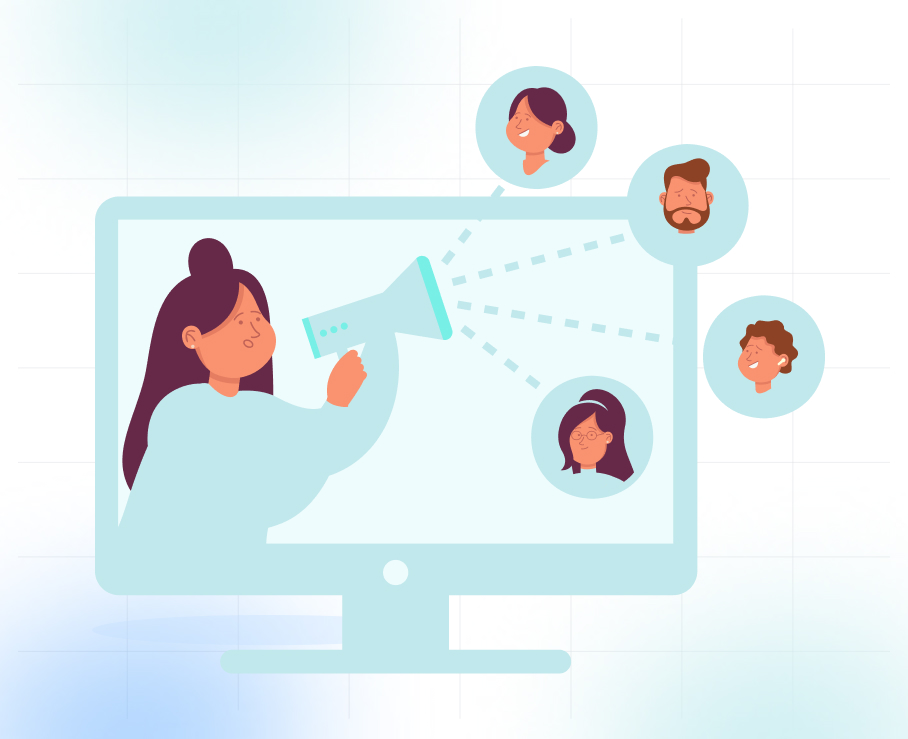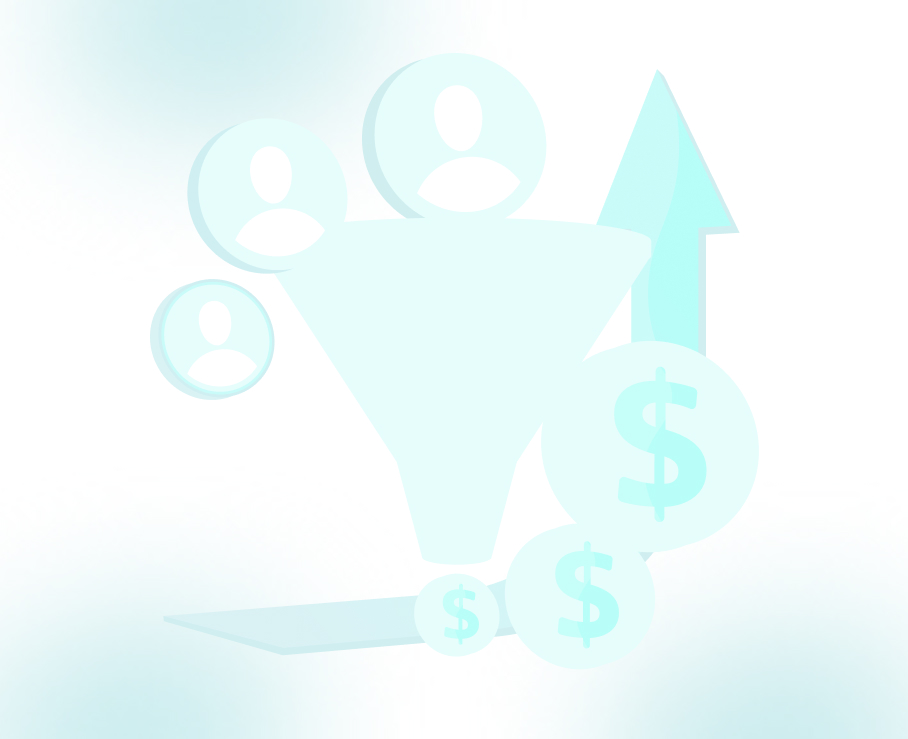
Definitive Guide to B2B Lead Generation Strategies

Businesses are always looking for new ways to grow their customer base and improve sales performance in response to the highly competitive business environment. One of the most effective ways to achieve this is through B2B lead generation. This process involves identifying potential clients (businesses or individuals) that are likely to purchase your products or services.
For B2B (business-to-business) companies, lead generation is crucial as it drives sales, fosters relationships, and ensures steady growth. In this comprehensive guide, we'll explore the ins and outs of B2B lead generation strategies, from understanding what it is to the technology that can help streamline the process.
What is B2B Lead Generation?
B2B lead generation is the process of identifying and attracting potential customers for a business. Unlike B2C (business-to-consumer) lead generation, which targets individual consumers, B2B lead generation focuses on engaging other businesses that could benefit from your products or services.
This process typically involves identifying key decision-makers within these businesses, such as CEOs, managers, or other executives, and nurturing them through targeted marketing efforts until they are ready to make a purchase.
For many B2B companies, lead generation is the first step in a long sales process, which can take time and resources to convert leads into paying customers. As a result, it's essential to have a well-defined lead generation strategy that allows a steady stream of potential leads to enter your sales pipeline.
The Significance of B2B Lead Generation
Lead generation is the backbone of every high-performing B2B sales strategy, driving consistent growth by connecting businesses with the right prospects at the right time. Without a constant influx of new leads, businesses will struggle to maintain a healthy pipeline, which can directly impact revenue growth. B2B lead generation helps businesses identify and reach potential clients that are most likely to engage with their products or services, thus improving the chances of closing deals.
Some of the key reasons B2B lead generation is crucial include:

- Business Growth: It provides businesses with a continuous stream of prospects, helping them grow their customer base.
- Revenue Generation: A targeted lead generation strategy increases the chances of securing high-value clients, leading to higher revenue.
- Efficiency: Lead generation allows sales teams to focus on marketing qualified leads rather than wasting time on prospects that are unlikely to convert.
- Relationship Building: Through consistent engagement, businesses can nurture relationships that lead to long-term partnerships.
Without an effective B2B lead generation strategy, businesses may struggle to grow their sales, resulting in missed opportunities and stagnant growth.
Now, let’s look at types of B2B leads and how they can help your campaigns perform better.
Read: Why Email Marketing Is a More Effective Strategy Than Cold Calling
Types of B2B Leads

Understanding the different types of B2B leads is crucial for a successful lead generation strategy. Leads can be classified into three categories: cold, warm, and hot. Each type represents a different stage in the sales funnel and requires customized marketing efforts to move them through the process.
- Cold Leads: These are prospects who have shown little to no interest in your business. They may not be aware of your product or service, or have no immediate need for it. Cold leads require more time and effort to nurture and convert into paying customers. Marketing efforts focused on education and awareness are most effective at this stage.
- Warm Leads: Warm leads have shown some interest in your business, such as downloading a whitepaper, signing up for a newsletter, or attending a webinar. While they may not be ready to purchase, they have shown enough interest to warrant further engagement. The key here is to provide targeted content that addresses their pain points and moves them further down the sales funnel.
- Hot Leads: Hot leads are those that have expressed a strong interest in your product or service. They may have requested a demo, signed up for a free trial, or conversed with a sales representative. These leads are closer to making a purchase and require immediate attention to convert them into customers.
By understanding these lead types, businesses can develop targeted strategies to engage each group effectively.
To understand how quality leads are sourced and converted, let's break down the step-by-step process of effective B2B lead generation.
Process for B2B Lead Generation

The B2B lead generation process involves several stages, each of which requires careful planning and execution. The goal is to guide a lead through the stages of awareness, consideration, and decision-making until they are ready to convert. The key stages in the B2B lead generation process include:
- Identifying Potential Leads: The first step is identifying businesses that would benefit from your product or service. This can be done through market research, cold outreach, referrals, or inbound marketing tactics such as content creation and SEO.
- Attracting Leads: Once you have identified your target audience, the next step is to attract them to your business. This can be achieved through various marketing channels, including content marketing, email campaigns, social media, and paid advertising.
- Qualifying Leads: Not all leads are created equal. It’s essential to qualify leads to determine if they're a good fit for your product or service. This can be done through lead scoring, which ranks leads based on criteria such as industry, company size, budget, and engagement level.
- Nurturing Leads: After identifying and qualifying leads, it's time to nurture them through targeted content and personalized engagement. Nurturing involves staying top of mind through email campaigns, follow-ups, and regular communication to build trust and move them closer to making a purchase.
- Converting Leads into Customers: The final step is to convert the lead into a paying customer. This often involves sales calls, product demos, and negotiations to close the deal.
The B2B lead generation process requires careful management and a strategic approach to ensure prospects are engaged at every sales funnel stage.
Read: Top 8 Outbound Lead Generation Strategies for 2025
Effective Strategies for B2B Lead Generation

Now that you understand the importance of B2B lead generation and its process, let’s look at some of the most effective strategies for generating leads in a B2B environment.
- Content Marketing: One of the most powerful tools for B2B lead generation is content marketing. Businesses can attract potential leads and establish themselves as thought leaders by creating valuable informative content such as blogs, case studies, ebooks, and whitepapers. This content should be optimized for search engines to increase visibility and drive organic traffic.
- Email Marketing: Email marketing remains one of the most effective ways to nurture leads and keep them engaged. By creating personalized email campaigns and offering valuable content, businesses can stay top of mind and encourage prospects to move through the sales funnel.
- Social Media Marketing: Social media platforms like LinkedIn, Twitter, and Facebook are excellent for B2B lead generation. Businesses can expand their reach and build relationships with potential leads by sharing valuable content, engaging with followers, and joining industry groups.
- Paid Advertising: While organic methods, such as content marketing, are highly effective, paid advertising can provide a quick boost to your lead generation efforts. Platforms such as Google Ads and LinkedIn Ads allow businesses to target specific audiences and generate high-quality leads.
- Referral Programs: Word-of-mouth referrals are one of the most effective ways to generate leads. By encouraging satisfied clients to refer others, businesses can tap into a new pool of prospects already interested in their products or services.
Each of these strategies can be highly effective when used correctly. However, the key to success is integrating them into a cohesive, multi-channel approach that targets leads at every stage of the sales funnel.
How Do Nurturing and Lead Qualification Operate?
Lead qualification and nurturing are essential components of the B2B lead generation process. Both practices help businesses identify which leads are worth pursuing and ensure that prospects are engaged with the right content at the right time.
- Lead Qualification: Lead qualification is the process of determining whether a lead is worth pursuing. This involves evaluating the lead's level of interest, buying intent, and fit with your business’s offerings. One standard method for lead qualification is the BANT framework, which stands for Budget, Authority, Need, and Timing. If a lead meets these criteria, it’s more likely to convert into a customer.
- Lead Nurturing: Lead nurturing involves building relationships with prospects over time, providing them with the information and resources they need to make an informed purchasing decision. Nurturing typically involves a series of touchpoints, such as personalized emails, phone calls, and follow-up meetings. This keeps the lead engaged and moves them closer to conversion.
Read: Improving Conversion Rates with Automation: Key Strategies
Methods for Nurturing Leads

There are several methods businesses can use to nurture their leads effectively:
- Email Campaigns: Send regular emails with valuable content, such as educational resources, product updates, or special offers.
- Social Media Engagement: Engage with leads on social media by responding to their comments, sharing relevant content, and participating in discussions.
- Personalized Follow-Ups: Send personalized messages based on a lead’s behavior, such as downloading a resource or attending a webinar.
- Understanding Client Needs: Ask leads about their specific requirements and challenges to gain deeper insights and tailor your offerings, building stronger, more personalized connections.
- Webinars and Demos: Host webinars and product demos to showcase your expertise and provide leads with an in-depth understanding of your products or services.
The goal of nurturing is building trust, answering questions, and guiding prospects through decision-making.
What Technology Can Help with B2B Lead Generation?

There are several tools and technologies available to help businesses streamline their B2B lead generation efforts. These technologies can automate processes, enhance targeting, and improve the efficiency of the sales and marketing teams. Some key technologies include:
- Customer Relationship Management (CRM) Software: CRM platforms allow businesses to manage their lead database, track interactions, and analyze lead data.
- Marketing Automation Tools: Tools that automate email campaigns, lead nurturing, and social media posting to save time and improve engagement.
- Lead Scoring Tools: Lead scoring tools help businesses prioritize leads based on engagement and fit.
- AI and Chatbots: AI-powered chatbots can help qualify leads quickly and engage with prospects on your website or social media platforms.
These tools can help streamline and optimize the B2B lead generation process, making it easier to attract and convert leads.
Conclusion
B2B lead generation is all about building lasting relationships with prospects that can convert into loyal customers. Whether through content marketing, email campaigns, or paid advertising, the focus should always be on providing value and fostering trust. By doing so, you can ensure a steady stream of qualified leads that will contribute to long-term business success.
TLM Inside Sales specializes in email marketing strategies that drive high-quality lead generation. With 9+ years of expertise, TLM creates personalized, targeted campaigns designed to engage decision-makers and nurture leads toward conversion. Their approach ensures each email delivers value, boosts engagement, and builds trust.
Partnering with TLM will help you refine your lead generation efforts, providing you with the tools and strategies to turn prospects into loyal customers.
Whether you're aiming to drive conversions or scale your outreach, TLM customizes data-driven strategies to deliver real results. Let's turn your ideal prospects into paying customers. Book a strategy meeting today and see how we can fuel your growth.
FAQs
1. What is lead generation, and why is it important?
Lead generation is the process of attracting and converting strangers into potential customers who have shown interest in your product or service. It's a crucial step in the sales funnel that helps businesses build a consistent pipeline of qualified prospects and drive revenue growth.
2. What's the difference between inbound and outbound lead generation?
Inbound lead generation attracts prospects through content marketing, SEO, and social media, drawing them in naturally. Outbound lead generation involves actively reaching out to potential leads via cold emails, calls, and ads. Both methods can be effective when aligned with your target audience and sales goals.
3. How do you qualify a lead?
A lead is qualified based on how well they match your ideal customer profile (ICP) and their intent to buy. This can be determined through criteria like company size, budget, decision-making power, and engagement level with your content or outreach.
4. How can I improve my B2B lead generation funnel?
To improve your lead generation funnel, ensure that your lead capture methods (e.g., forms, landing pages) are optimized, your nurturing emails are relevant, and your follow-up process is timely.
5. How long does it take to see results from a lead generation campaign?
Results can vary based on industry, sales cycle, and strategy. Typically, businesses start seeing measurable outcomes within 30 to 90 days of consistent lead generation efforts, especially when using targeted outreach and performance tracking.






